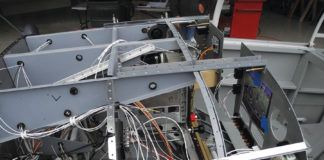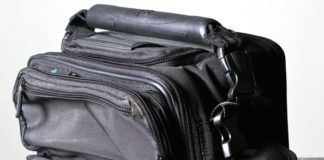Although the title of our magazine is KITPLANES®, we hope the tagline, “Your Homebuilt Aircraft Authority,” answers the question, “But what if I’m building from plans? Is this magazine for me?”
Our goal at KITPLANES® is to live up to that tagline—we want to cover and embrace the entire homebuilt aircraft community, including those who start their dreams of flight not with a kit in a large set of boxes, but with an Aircraft Spruce (ACS) or Wicks catalog open to the pages of raw materials: steel tubing, sheet aluminum, fiberglass cloth, and (the old favorite) aircraft-quality Sitka spruce.
When I was young and just beginning my career as a hangar rat, the first airplane I put my hands on was an old L-4 that we were converting to J-3 status as we rebuilt it from the bones up. It had these lovely wooden spars, carved from the heart of a Sitka spruce. I was taught that this was the wood of choice for flying machines: straight grained, consistent, flexible, but strong. I remember those spars even today—beautiful, better than fine furniture. We took off all the ribs, sanded them down, varnished them, and then began the loving task of returning them to flight. That airplane suffered a crash a few years later that bent the fuselage pretty badly—but I understand that the wings might still be hanging in a loft somewhere, and I hope that those spars are waiting to once again be returned to flight by another set of varnish-covered hands.
Building an airplane from scratch is a grand old tradition that goes back a very long way—well before the Wright brothers in fact. Whether you start with your own ideas, or plans drawn by others, constructing a flying machine in this fashion connects you to those generations that have gone before, bonding you to them through a shared history. I remember the first time I saw the big ACS catalog with all of those raw materials. The best part was up front—those pages of plans and material kits that set you dreaming about what to build. Kit builders often customize their airplanes, but plans builders make fundamental changes from the very start. So long as you obey the laws of physics and aerodynamics, you have the freedom to build the flying machine of your dreams.
I’d wager that the majority of new Experimental aircraft licensed each year in the United States are built from kits—yet plans- and scratch-built machines still emerge from shops and garages with regularity. It takes the average builder a lot longer to produce such machines, but to those who go that direction, it is all worth it.
This month, we present a survey of the plansbuilt world in our annual Buyer’s Guide. As with our Kit Buyer’s Guide from last month, the true database is online for your continued examination and perusal. Let these pages whet your appetite for exploring the many aircraft listed in our guide—the online version will allow you to compare and contrast as you settle in on your choice. If plans-building is in your future, we wish you the best of luck and will continue to support your efforts with articles on techniques and products that will see you through. KITPLANES® is about more than kits—it is a support system for anyone that wishes to leave the earth on wings they have built themselves.
Thirty Years
You might have noticed that our cover this month recognizes KITPLANES®’ 30th year of publication. Although my history with the magazine is fairly short, I continually look back at the pages of years gone by and see names that repeat themselves—expert builders and writers that have shared their experience over the years. Our history is important, for it drives our future—and in the coming months, we hope to resurrect a few memories of airplanes and people that have come before. Some will make you chuckle, some will make you think, and we hope that all will inspire.
KITPLANES® is here to inspire you and keep you going through the build—and beyond. We’re not just about building, we are also about flying, and doing so with good risk trades that will allow our readers to continue flying without incident for many years to come. Stick with us as we look back at the past on occasion, and don’t forget: we survive on the contributed wisdom of our readers. We’re always looking for good stories—and we’d love to publish yours!

![]()
Paul Dye retired as a lead flight director for NASA’s Human Space Flight program, with 40 years of aerospace experience on everything from Cubs to the space shuttle. An avid homebuilder, he began flying and working on airplanes as a teen and has experience with a wide range of construction techniques and materials. He currently flies an RV-8 that he built in 2005 and an RV-3 that he recently completed with his pilot wife. A commercially licensed pilot, he has logged over 4500 hours in many different types of aircraft. When not writing on aviation topics, he consults and collaborates in aerospace operations and flight testing projects.




